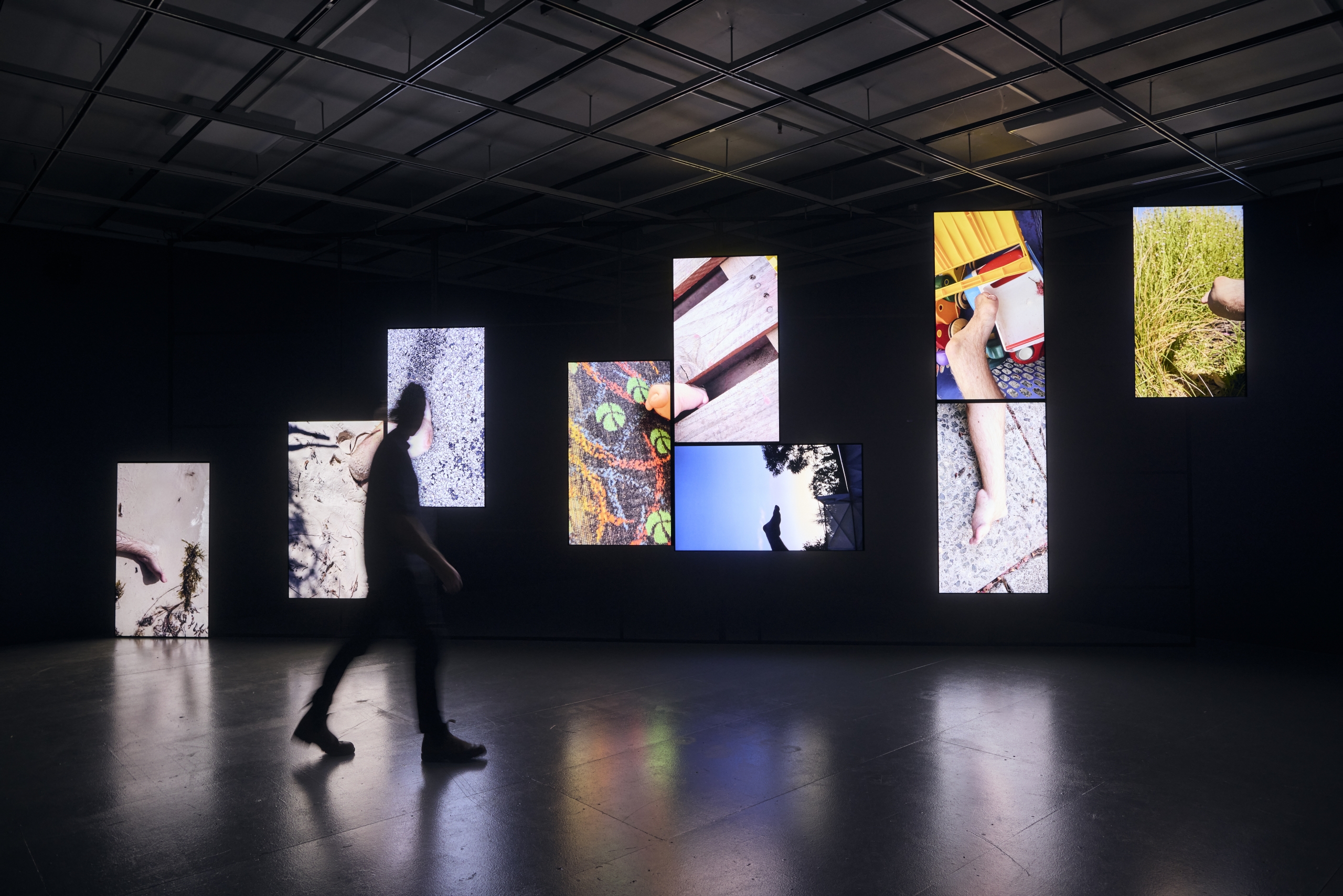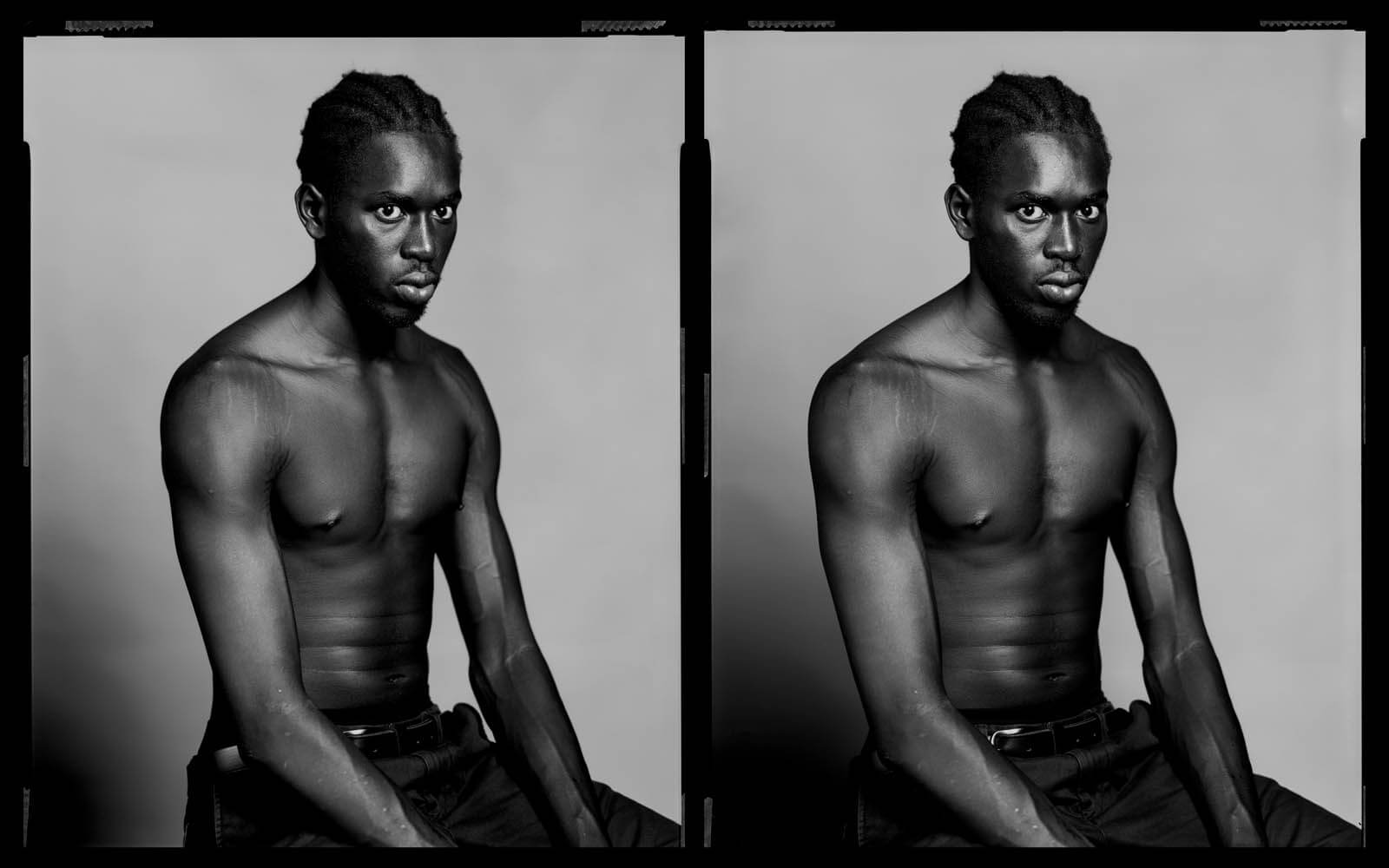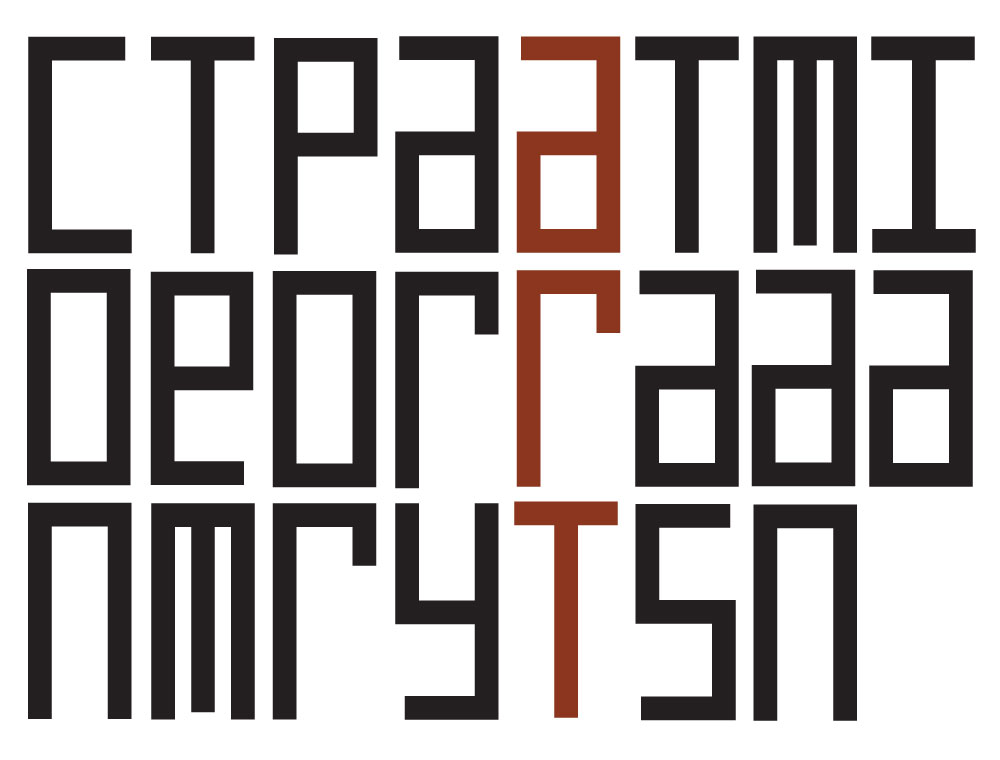Interfacial Intimacies
Bruno Booth, Amrita Hepi, Léuli Eshrāghi, Bhenji Ra, Aleks Danko, Cassie Sullivan, Georgia Morgan, Cigdem Aydemir, David Rosetzky, Shea Kirk
Curated by Caine Chennatt
May 2024–April 2026
What does it mean to be the absolute essence of who you are without being wedded to any of it?
For a long time, the ‘self’ was considered a stable and trustworthy container within which you can be found.
Emerging theories of selfhood recognise that it isn’t so simple. We know that we can have as many social selves as the people who recognise us. Rather than being fixed and always coherent, our personalities can be participated in as a plethora of parallel processes and possibilities. Of transformation. Of continuous becoming.
This exhibition brings together artists who hold and express tenderly the multiple aspects of their selves through a series of portraits and anti-portraits. With photography, film, painting, installation, textile, and performance, this exhibition explores the tensions of our networked personalities – our shadows, our masks, our shame.
Yet, the artists retain their agency and their ‘right to opacity’, to resist being wholly understood, or essentialised; towards an openness of cultural hybridity, to being visible while not being wholly transparent.
How will you show up today?

18 May – 27 July 2024
Redcliffe Art Gallery
Redcliffe QLD
12 Dec – 8 Feb 2024-25
Museum of Art and Culture Lake Macquarie, yapang
Booragul NSW
15 March – June 2025
Latrobe Regional Gallery
Latrobe VIC
19 Sept – 28 Nov 2025
South-East Centre for Contemporary Art
Bega NSW
6 Feb – 26 April 2026
Academy Gallery
Invermay TAS

Aleks Danko’s (b. 1950) artistic career spans more than five decades. Working across a diverse range of media including drawing, sculpture, installation, performance, and public art, Danko combines irony, humour and sarcasm with aesthetically sophisticated and materially confident gestures to interrogate the social, political and cultural landscape of Australia.
Amrita Hepi (b. 1989, Townsville of Bundjulung/Ngapuhi territories) is an award winning artist.Her current practice is concerned with dance as social function performed within galleries, performance spaces, video art and digital technologies. She engages in forms of historical fiction and hybridity —especially those that arise under empire— to investigate the bodies relationship to personal histories and archive. Amrita is represented by Anna Schwartz Gallery.
Bhenji Ra (b. 1990) is a transdisciplinary artist currently based on Gadigal land, Eora Nation. Her practice combines dance, video, illustration and community activation. Her work dissects cultural theory and identity, centralising her own personal histories as a tool to reframe performance. She is the mother of Western Sydney based collective and ballroom house SLÉ.
Bruno Booth (b. 1982) has used a wheelchair for most of his life, interrupted by a short and unsuccessful career as an amateur stilt walker when he used prosthetic legs as a child. In his memory these leather and metal devices would not have been out of place on the set of some dystopian, apocalyptic epic – not in a cool and attractive Fury Road sort of way, more like the zombies in the original Walking Dead. The experience of wearing restrictive equipment left him with a dislike of tight-fitting clothing, a love of speed and a need to reach over his head in supermarkets – as a child he made the decision to use a wheelchair as his primary mode of transport – and he’s never looked back (probably because he’s too busy looking out for sand pits on dark footpaths).
Cassie Sullivan is a lutruwita/Tasmanian Indigenous contemporary Artist. She has a responsive, intimate, and experimental practice that crosses disciplines of moving image, photography, writing, sound, installation and printmaking. Cassie is currently exploring themes of intergenerational experience and trauma, bodily memory and knowledge holding.
Cigdem Aydemir (b. 1983) is a Sydney-based artist working in the mediums of installation, performance and video art. Her socially and politically engaged art practice investigates possibilities for intersubjective and transcultural communication with an interest in post-colonial and feminist issues. Much of her work expands on the veil as a culturally constructed site and as material realisation, while exploring the veiled woman cipher as resistant female other and as lived experience. Through critiquing, decolonizing and queering mechanisms, Cigdem questions established relations of power, while producing work that is driven equally by research, play, criticism and humour.
Cigdem was the 2013 recipient of the Redlands Konica Minolta Art Prize, in the Emerging Artist category, and the Edna Ryan Award for Creative Feminism in 2012. She has exhibited both nationally and internationally receiving support and opportunities from Australia Council for the Arts, Arts NSW, Ian Potter Cultural Trust, Freedman Foundation (Travelling Arts Scholarship), Performance Space (Sydney), Salamanca Arts Centre (Hobart), and Vryfees (South Africa).
David Rosetzky (b. 1970) is a Melbourne-based contemporary artist working across photography, video and installation. His black-and-white photographs and double exposures often allude to different psychological and emotional states, identity and selfhood. He is known for the elegance and aesthetic rigour of his art, which draws on the visual languages of contemporary advertising and cinema.
My name is Georgia Morgan (b. Eora Nation | Sydney 1992) and I am a Tamil Australian artist. My practice is devotional and aspirational. It is storytelling. I am in one place and longing for another (that may or may not exist).
My practice is multidisciplinary and includes large-scale site-specific installations, photographs, videos, paintings and ceramics. Materiality, play, intuition and imagining inform my process.
When I look at the work I have made, I repeatedly think of puja. Puja is a hindu act of worship that involves offering physical objects — such as gold, fruit or flowers — to an image of a god. Sometimes gold foil or plastic fruit or flowers are offered. This doesn’t detract from the value of worship, as it is the conviction of the action that matters.
This knowledge and use of material is consistent in my practice.
It is what I say it is. You believe cause I believe.
Léuli Eshrāghi (Seumanutafa Sāmoan, Persian, Cantonese) (b. 1986) intervenes in display territories to prioritise global Indigenous and Asian diasporic visuality, sensual and spoken languages, and ceremonial-political practices. In 2023, Eshrāghi will exhibit new work commissioned by Aupuni Space (Honolulu), the Museum of Contemporary Art (Tallawoladah), and Plimsoll Gallery, University of Tasmania (nipaluna). In 2022, Eshrāghi presented new work at the Tate Modern (London), the Queensland Art Gallery | Gallery of Modern Art (Kurilpa), and the Centre d’exposition de l’Université de Montréal (Outremont). Recent residencies include: TRADES A.i.R./Aupuni Space (Honolulu), Institut français/Cité internationale des arts (Paris); and the University of Tasmania (nipaluna). Their work is held in the Royal Bank of Canada (Warrang/Tsi Tkaró:nto) and Fonds régional d’art contemporain (Carquefou/Nantes) collections, and in private collections in Australia, Canada, and Norfolk Island.
Shea Kirk is a Melbourne-based visual artist working with traditional photographic methods and techniques. Shea Kirk has been a finalist in the Olive Cotton Award (2019); National Photographic Portrait Prize (2019) and the Head On Portrait Prize (2018), and has participated in a number of group exhibitions across Victoria.
